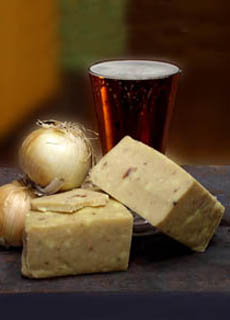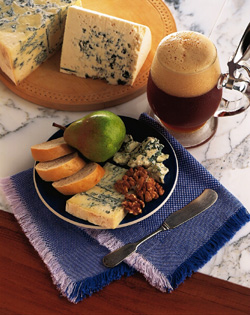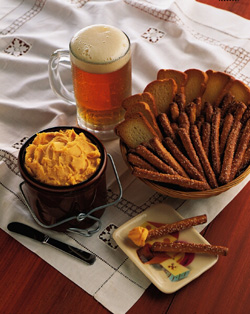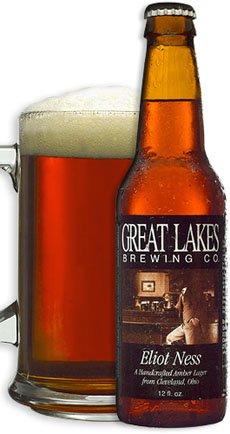Beer Glossary: A Glossary Of The Different Beer TypesPage 1: Types Of Beer Terms & Definitions for the terms with the letter A & History Of Beer This is Page 1 of an 9-page article. Click on the red links below to visit other pages. This glossary is protected by copyright and cannot be reproduced in whole or part. You are welcome to link to it. Note that there are many hundreds of official beer styles. To see the full list, visit The Brewers Association.
|

|
|
|
If you don’t know a bitter from a hop, use this glossary as a quick study guide. After you pass the test, treat yourself to an ale or a lager. Above, amber ale with caramelized onion Cheddar cheese from iGourmet.
BEER HISTORY Beer is the most frequently-consumed beverage in the world, after water and tea! By 4000 B.C.E., the Babylonians were brewing at least sixteen varieties of beer (when you see all of the different styles in this glossary, you won’t be surprised at that number). The Pharaohs of Egypt paid their workers with jugs of beer (later, the Romans would pay their legions in salt, leaving us with the phrase, “worth his salt” rather than “worth his beer”). ABBEY BEER A.B.V.
|
 Abbey-style beer with Gorgonzola and blue cheeses, pear, walnuts and baguette. Photo courtesy Wisconsin Milk Marketing Board. |
|
|
A.B.W. The abbreviation for Alcohol by Weight. ADJUNCT, MALT ADJUNCT or CEREAL ADJUNCT ALE
|
 Amber ale served with Cheddar cheese crock, pretzels and toasts. Photo courtesy Wisconsin Milk Marketing Board. |
|
|
ALTBIER A dark amber, hoppy pale ale brewed around Düsseldorf and the Lower Rhine region of Germany. The name literally means “old beer,” and refers to the pre-lager brewing method of using a warm top-fermenting yeast (like British pale ales). The production techniques create a cleaner, crisper ale.
|
||
|
AMBER ALE Amber ale arose from the American craft movement. It is pale ale recipe brewed with a proportion of amber malt to produce an amber color, light copper to light brown. An "œAmerican red ale" would be an ale with a more robust, ruddy color. The style is different from European (Irish)-style red ale. AMBER LAGER Amber lager was created in Vienna, Austria by Anton Dreher of Vienna in the mid-19th century. The style balances rich, fragrant malt flavors with crisp hops. Pair it with spicy dishes, pork, sausage and robust pasta dishes. AMERICAN BEER & ALE American craft brewers have put their own spin on classic European beer styles. There are some 30 different styles, including Pumpkin Ale. AMERICAN PALE LAGER
|
 Amber lager. Photo courtesy Great Lakes Brewing Co. |
|
|
AMERICAN PALE ALE AUBURN BEER Continue To Page 2: Terms Beginning With B
|
||
Last Updated Apr 2018
© Copyright 2005-2025 Lifestyle Direct, Inc. All rights reserved. All images are copyrighted to their respective owners.